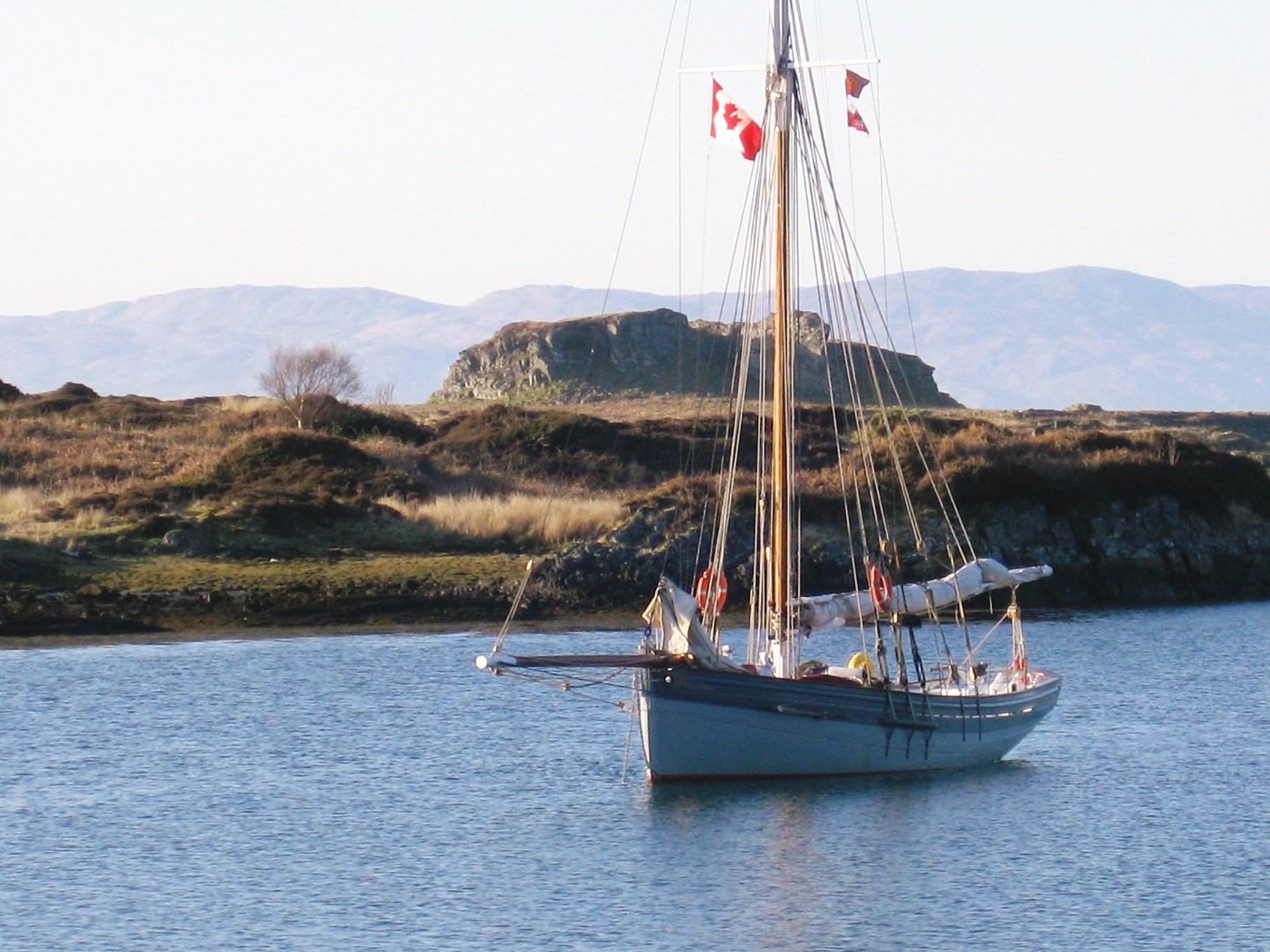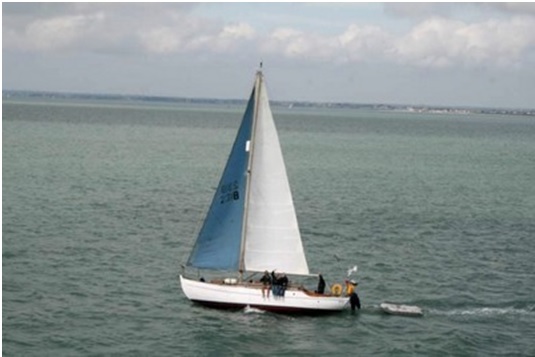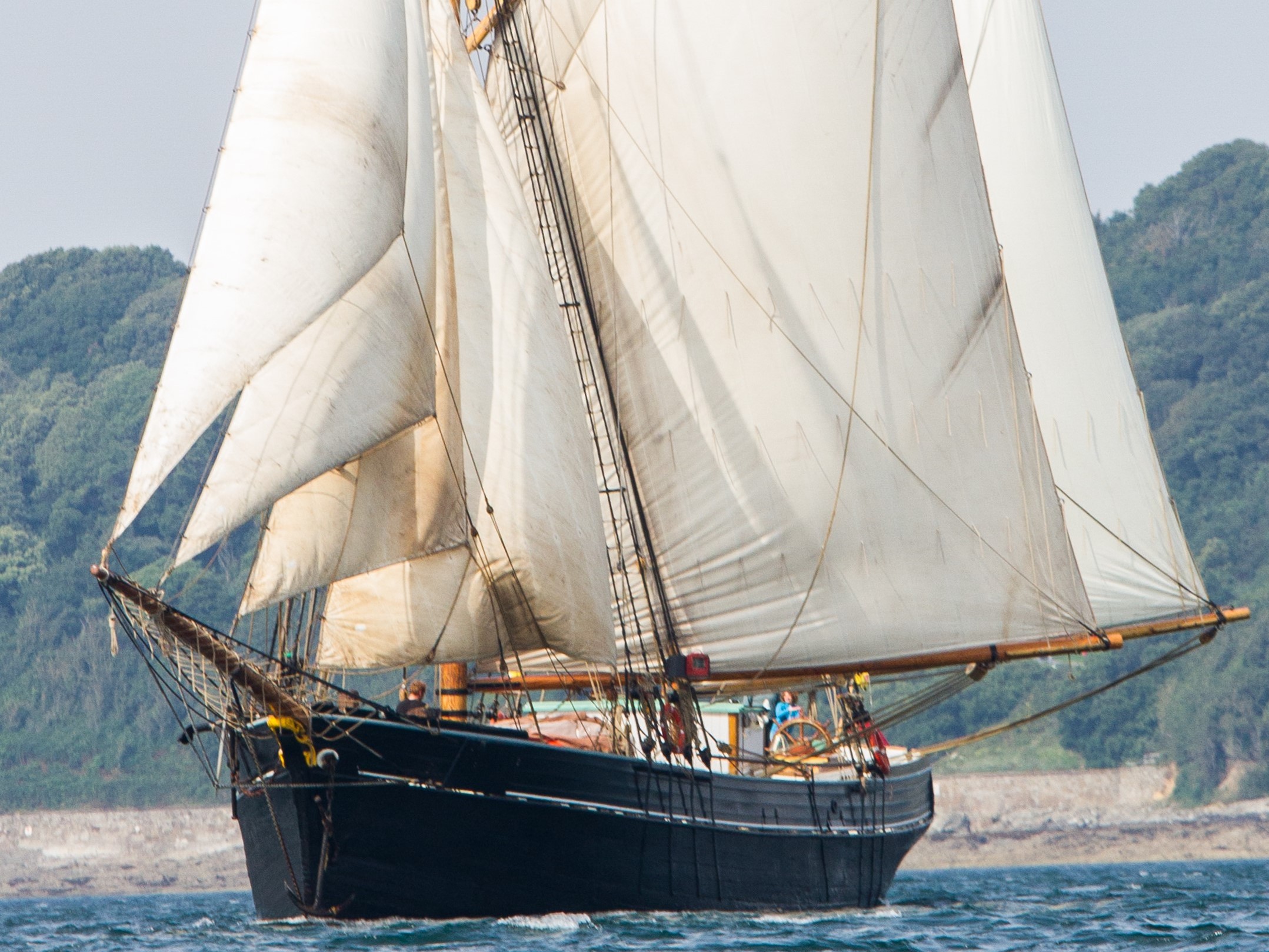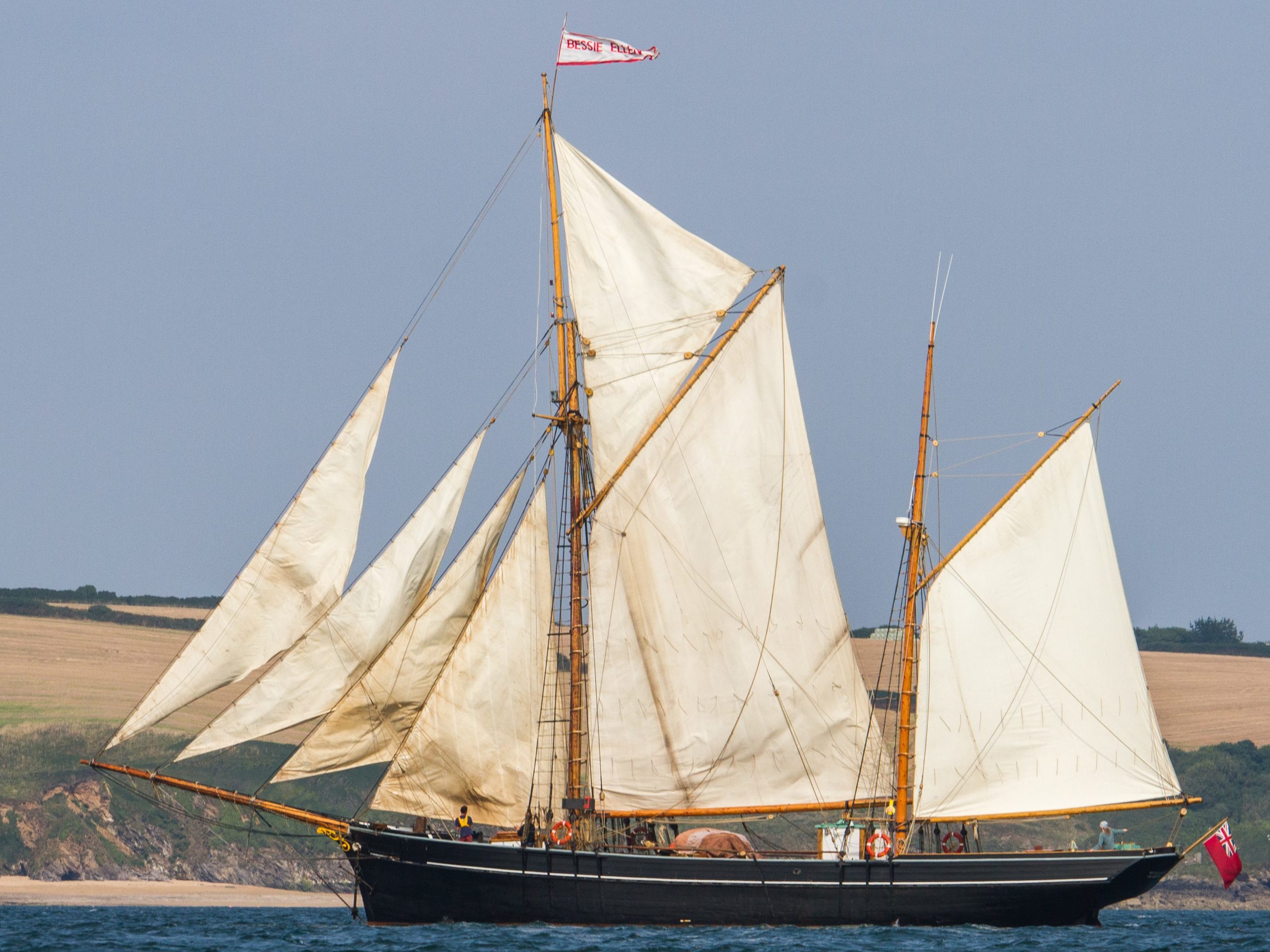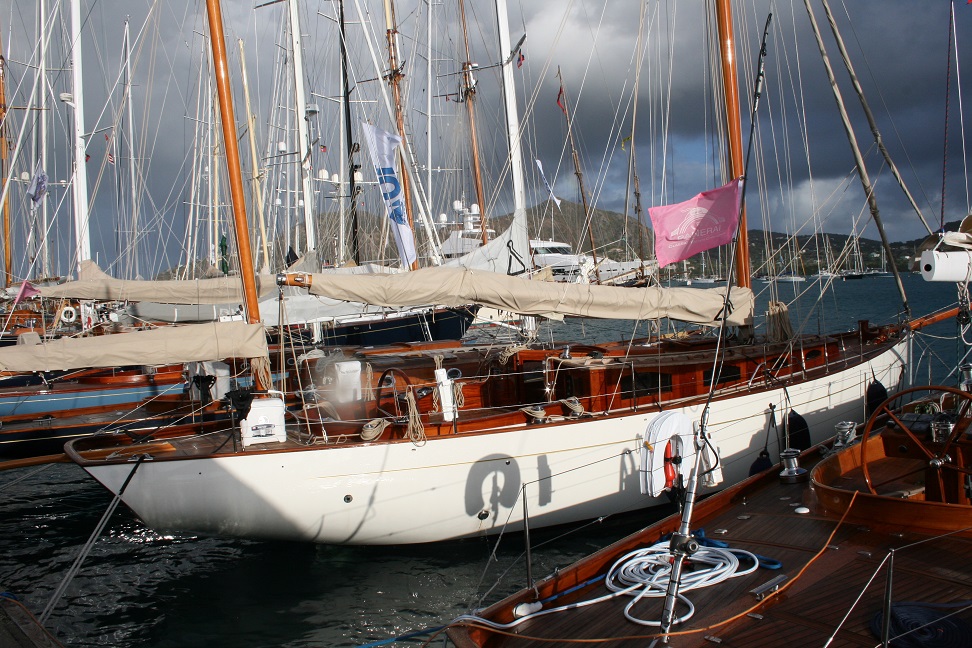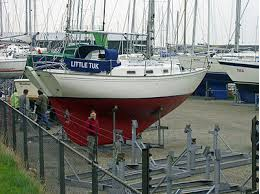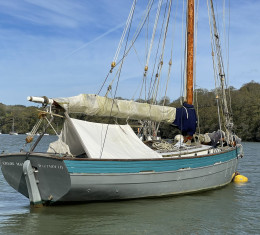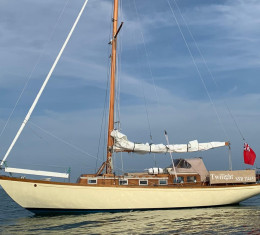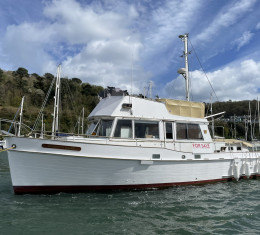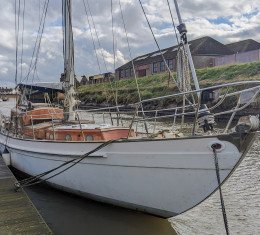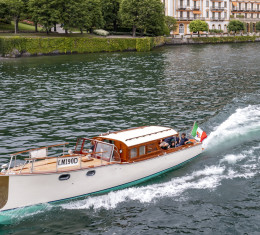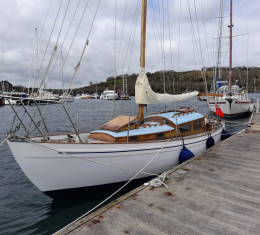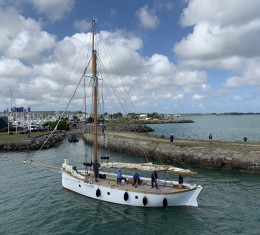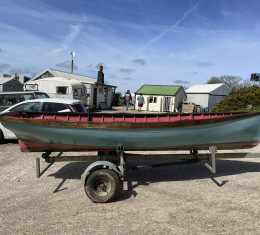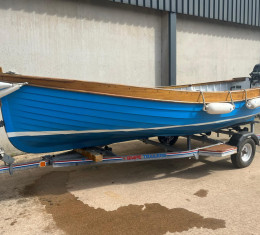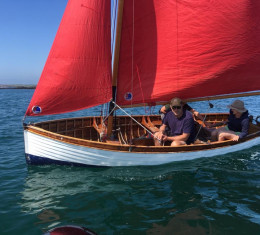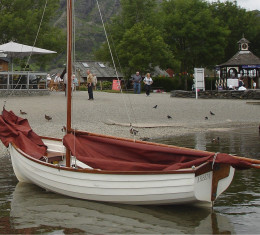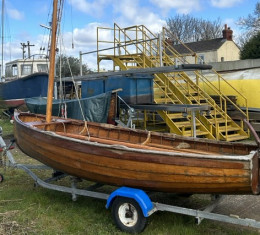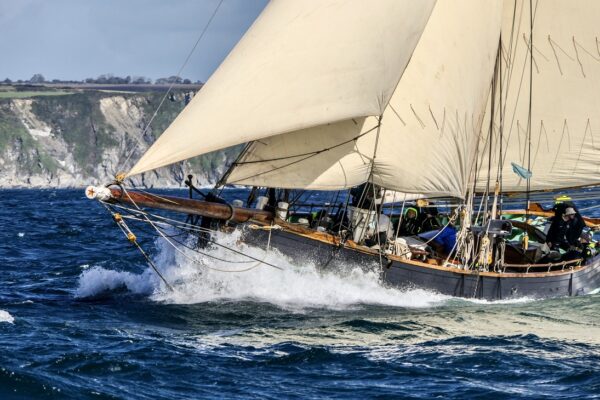I have to apologise for the lack of activity on our blog in recent months. It seems that the everyday work load at the moment is proving enough for us to cope with and the writing of blogs somehow seems to go by the way side.
Having said that, the up side is that we are busy enough with day to day business to keep our feeble minds occupied which is a great indicator for the current state of the market. The cycle of our wooden boat market in recent years has run about 12-18 months behind the cycle of modern plastic yachts, in that we didn’t really see a down turn until much later on. Over the years we have also established that we follow about 12 months behind the housing market. Our reasoning for the lag behind the plastic market is that it is very rare for a wooden boat owner to buy on borrowed money as the majority tend to spend within their means while with modern yachts the indications are that the percentage bought on finance is much higher. Because of this when the market started to deteriorate owners pulled their horns in and said that if nobody was going to pay good money for their boats they would sit tight and wait for the market to come back up to them.
For many owners this was no problem, at least not for a year or so, however 3 or four years down the line and a lot of people started getting desperate and needed out of their boats. For a long time there was no solution to this. People were scared to spend money and it did not matter what price the boat was at because there simply was no market.
Come late 2012 and into 2013 we started to see some promising signs with some very unseasonal buying activity in January and February. As this year has progressed things have gone from strength to strength, and after some early scepticism that the activity would be a short lived bubble, we are now reasonably hopeful that next year will be the same.
In our minds there are two reasons for this, the economy and our new web site.
The web site has been an enormous success and we are very grateful to Alex Watson of Dart Digital for her superb efforts in the beginning and her ongoing support through the evolution of the site, I am quite sure she is thoroughly fed up with us asking ridiculous questions on a weekly basis every time we get stuck! The traffic statistics have gone from strength to strength in the last 12 months and look set to carry on increasing, and although many of our visitors are simply interested in nice boats and just browsing, there are a growing number of serious buyers. We regularly receive compliments about the site, but surely the pick of the bunch is “this is the best boat porn web site I have ever found!”
The general strengthening economy has also been a huge factor for us as people have suddenly found some confidence to spend their money. We believe that over the last few years a lot of people have had money in the bank doing absolutely nothing and that the country has now got to a stage where people are almost bored of the recession, bored of being told not to spend, bored of living in fear of another crash. They have decided that perhaps they should be looking for that boat after all, and low and behold when they do start looking it is clear that there are a lot of cheap boats to be had. For several years owners have been stuck with a boat they do not want, buyers are suddenly spending their money and the result is decreased selling prices and increased boat sales. Our experience is that prices are about 20% lower than they were before the economic problems began, but despite this there are a lot of happy buyers and sellers. Purchasers are getting boats for what is perceived to be a good price, and sellers are moving their boat on and removing what is in a few cases, a real headache. We have had that awful phrase ‘buyers market’ thrown at us on a daily basis in the last year which I think is quite a good indicator, and although I’m fairly sure it’s true, whenever anyone mentions it, especially in a first enquiry, it immediately gets my hackles up.
We are always very aware that we have a responsibility to the broader traditional boat market when placing valuations and we like to think that we are realistic yet fair. There is no point in telling an owner he will get £50 for his boat to keep him happy and get her on our lists when in reality we know it will probably sell for £25, that is not fair on seller or buyer and a waste of our time. However we also know that it is in every traditional boat owner’s interest that we maintain and promote value when appropriate.
If we are completely honest not every wooden boat is built to the best standards using the best materials and many will have suffered neglect over the years so that refitting to smart sea-going condition will cost far in excess of the boat’s market value. . This is a well known tale and one that most of us have experienced first hand at some point. The fundamental problem is that there is not a big enough differential between the good boats and the others. Poor quality boats have often sold for prices beyond their real value but more importantly, the nice boats have not been earning the reward they deserve. While we will not see a return to the pre-crash prices for another couple of seasons yet, we are keen to promote the value of good boats be it a 10’ clinker dinghy or a 60’ cruiser. Restoration and maintenance of these wonderful yachts maintains a huge industry as well as our maritime history and culture and must be rewarded in the continued value of the asset.
So what does the future hold for our wooden boats? I think the immediate future looks bright as we have willing buyers and willing sellers coming to the table with the intent to do business and there are (a lot of) some nice boats to choose from. My slight concern though is what will be happening in 20 years time. When the business first started we were selling boats that were only 10 or 15 years old and were widely regarded as old hat with the advent of fibreglass. In the 1970’s if you sailed in a wooden boat even though only 10 years old which nowadays we would think was almost new people would say “poor chap, can’t be doing too well” Now if you sail arrive in a nice wooden boat they say “He must be doing well, he can afford a wooden boat!” These days we are selling the very same boats, just 35 years older! The problem though is not the age of the boats, they can be repaired, have new frames and planking, new keel bolts, have bits of rot chopped out and replaced, the beauty of a wooden boat. The owners on the other hand are not so lucky, the odd hip replacement or new heart will keep them going for another few years, but at the end of the day the boat is bound to outlive its custodian. So what happens next, where are the hoards of young new owners clamouring at our door to own a wooden boat? Well I am afraid they don’t exist just yet, and with a few exceptions, there are very few young people coming into the traditional boating world with the desire, knowledge and the means to own and maintain a nice yacht.
We have however seen an encouraging number of people come to us in the last year or so who have never owned a wooden boat before, all their friends are telling them they are absolutely mad, but they have desire to own a classic boat and want help and guidance in buying the right one. I am always delighted when this happens as we can ensure they go in the right direction and don’t get dragged way over their heads into a project yacht that will break them. This has been the downfall of too many boat owners and there is no need for it as we can find the right boat for every buyer if they just ask. Some owners get very nervous and often critical of us for sending them a potential buyer who knows very little about wooden boats, but our view is that everyone has to start somewhere and as long as they have an open mind and are put in touch with the right people who will help with the work without ripping anyone off then they will be absolutely fine. We were all at that stage of knowing nothing about wooden yachts at some stage so we have to give new owners coming into the market a fair crack at the whip and help them find their way in what can sometimes be a mysterious new world.
But it is not just new owners we need, it is also new boats. Wooden yachts can always be refitted but at some point they will be past the point of no return and slowly but surely the numbers will diminish. We have seen the building of lots of new boats in the last 10 years with Luke Powell at the head of the Pilot cutter revival building some very nice quality boats to a proven design. Then there are the numerous individuals building themselves a new boat in sheds at the head of little back waters, quietly lofting up frames and building their dream with no fuss, be it a traditional working boat or a classic yacht, steadily adding to the numbers of nice wooden boats afloat. Look at the big Holman we have for sale, a superb quality yacht built by one man in a shed near Falmouth, a professional working boat builder he has taken a superb Kim Holman design and created what will be a powerful and fast cruising yacht with beautiful lines.
But what about the smaller new boats? Many of the builders are producing 50’ yachts to appeal to the market with serious quantities of cash to spend, but why not take a proven and well known design that has been successful in the past and turn them out. The point is to build what the market wants, not what the builder has a desire to build. Why reinvent the wheel? We moved on from plank on edge designs, elegant as they are, for very good reasons. Luke found a market for his very traditional version of the Pilot Cutters, Pete Nash built a superb elegant West Solent , Nigel Irens built a fascinating launch, Cockwells are building some exceptionally fine modern traditional boats.
We think there would be a market for a nice 30-38’ yacht with simple joinery and a good build quality, a boat that wouldn’t cost half a million pounds but it must have the looks and that charisma owners are looking for. Take the 1937 William Blake 37’ gaff cutter we have just sold, a stunning little boat, manageable by one person, designed to the Metacentric theory with generous beam and volume so she may not be a race winner round the cans but she is comfortable in a seaway, balanced on every point of sail, and an absolute joy to look at and to own. I am sure a new boat to this design would find willing buyers. Then there are options which can be considered to make a new boat more affordable and accessible to the market. We frequently hear from people who just want a sound hull but are not worried about interior or even rig because they can do that themselves. So build a new hull and deck of the right design, provide rig plans and let the new owner fit her out himself. It is well known that fitting out the interior of a boat costs a disproportionate percentage of the overall build cost. And cut back on the deck costs by fitting a sheathed ply deck rather than wasting good wood on a laid teak deck. The ply deck can look stunning with varnished hardwood king planks and cover-boards as Cheoy Lee discovered in his 1960’s yachts, it adds strength to the hull, is totally water-tight and above all almost maintenance free while a teak deck, wonderful as it is can be a rod for an owner’s back and adds significant cost to the build.
We have a huge reserve of skills in this industry which will only be properly exploited when we start building what the market wants to buy.
